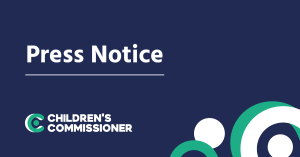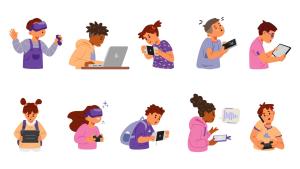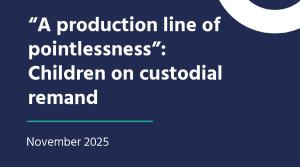This paper is the second in a series of reports exploring the impact of pornography on children. As Children’s Commissioner, it is my duty to protect children from harm in both the physical and online worlds. As the Online Safety Bill moves through Parliament, I want to use this opportunity to turn the tide on pornography’s harms to children. I am clear that children should not be able to access pornography, and my office’s work in this space continues to demonstrate the harm it can cause to children and young people.
My first report, published in January 2023, “A lot of it is actually just abuse”, set out findings from a survey of over a thousand 16-21-year-olds and focus groups with teenagers. It established that the average age at which children first view pornography is now 13 years old. Substantial proportions of young people surveyed who had seen pornography viewed it at a much younger age than 13 – 27% by age 11 and 10% by the age of 9. Young people spoke about the unbearable pressure to view hardcore pornography even if they do not want to, much of which depicts degrading acts and violence against women. Our survey analysis also demonstrated a significant link between an early age of first exposure to pornography and frequency of exposure in later years. The age of first exposure and frequency of exposure were shown to be closely linked to the likelihood of a young person viewing violent content online. Frequent users of pornography were also more likely to have real-life experience of an aggressive or degrading sex act.
For too long we have brushed the issue of pornography under the carpet as awkward, uncomfortable, or too difficult to solve. It is crucial that we don’t shy away from discussing the nature, scale and impacts of online pornography. No child should be able to stumble across pornography online; in a world where pornography is a click away for any child, I am clear that this must change and until then we must grapple with the implications. Sadly, we are hearing from more young people that they are watching pornography and thinking that it is reflective of real life or healthy relationships, which is not the case. This is reflected from what I heard recently from a young person:
“Porn is often the starting point for young people when it comes to sex, how to have sex, and what to expect.” – Young woman, 20, first saw pornography aged 10.
From this work it is evident that some children and young people are being negatively impacted by pornography. I have been so concerned by the growing research that shows pornography may influence harmful behaviour. I knew this was an area I needed to explore further. That is why I have used my statutory powers to request data, and for the first time collected case files on child-on child sexual abuse from one police force and from one Sexual Abuse Referral Centre (SARC), where children had been referred because they had been sexually abused by another child. My office has carried out innovative analysis of the text these documents to understand more about the role that pornography might play at this sharpest end of child abuse cases.
It is incredibly concerning that I found references to specific acts of sexual violence commonly seen in pornography in half of the interviews carried out following these cases of sexual abuse. Additional review of some of these cases found children suggesting direct links between pornography exposure and the harmful sexual behaviour exhibited.
This new analysis, together with other evidence in this report, presents a compelling case. This report contributes to the literature on pornography’s role in shaping and fuelling violence against women and girls.[i] The risk factors behind harmful sexual behaviour and children abusing other children are complex, with pornography being one possible factor among others. Much of the abuse is taking forms which are depicted in pornography.
This report, once again, makes for difficult reading. It includes accounts of sexual violence and descriptions of aggressive sexual acts found in pornography. It is perhaps the work that I have found hardest to publish since becoming Children’s Commissioner. Each of the 502 case files analysed for this report represents terrible trauma wrought on a child, by another child.
This report is focused on the harms that children face from accessing violent pornography, and how that might influence their own harmful sexual behaviour. That is why regulation online is so critical to protect children and young people. I am categorically clear: no child should be able to access or watch pornography. Protecting children from seeing inappropriate material is critical, but it is just one part of the essential and urgent work of protecting children from sexual abuse. It cannot work in isolation and must be combined with broader preventative measures. It must also go hand in hand with making sure that any child who is a victim of this most terrible crime is given the support they need to recover, and access to swift and effective justice. That is why I have committed to further work directly with child victims to understand their experiences, so I can make wider recommendations about what needs to change.
This report is dedicated to the children who have suffered from the effects of online pornography exposure. It is my duty to stand up and protect you, and I hope this report is a step towards doing so.
**









